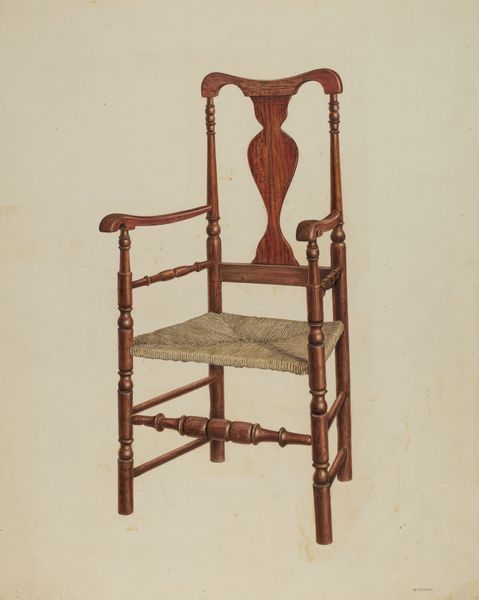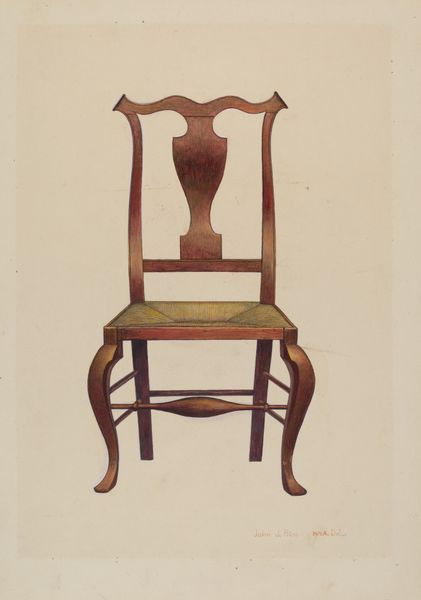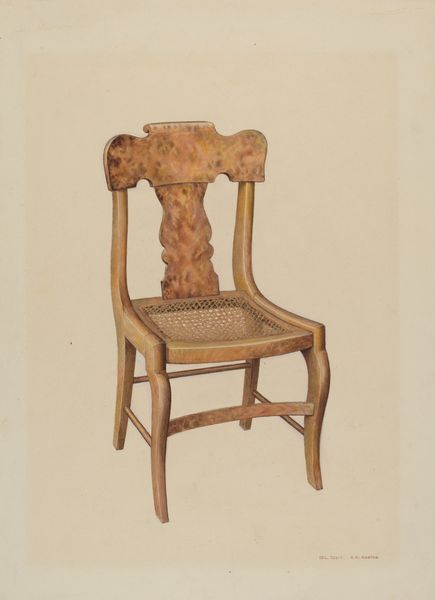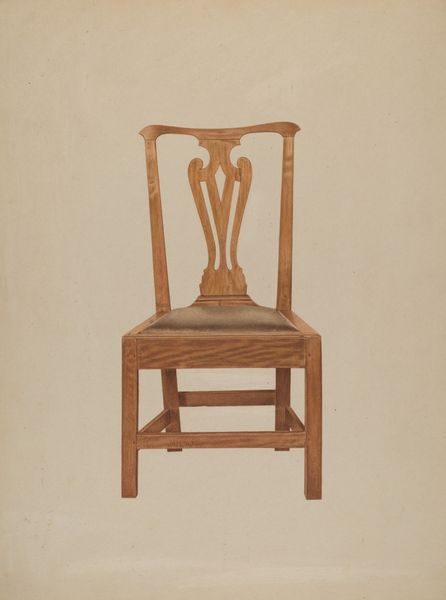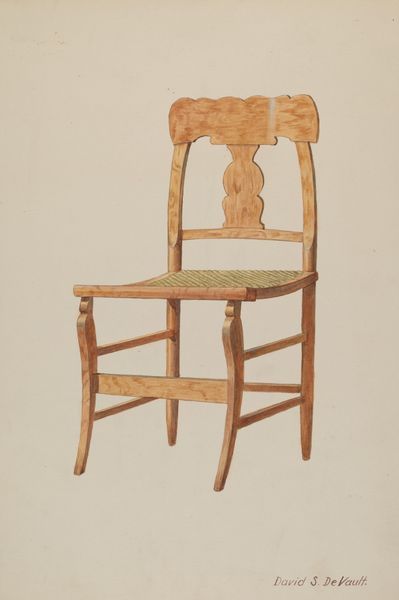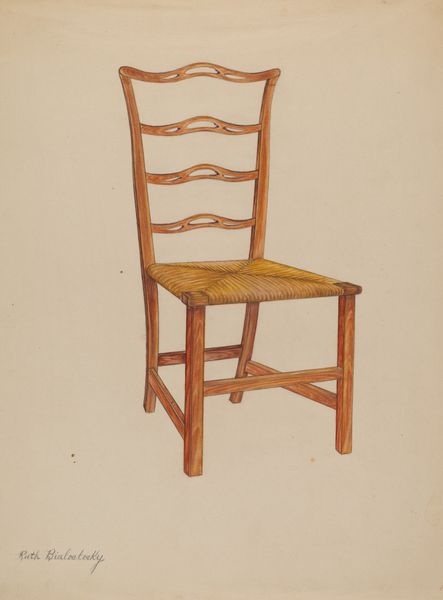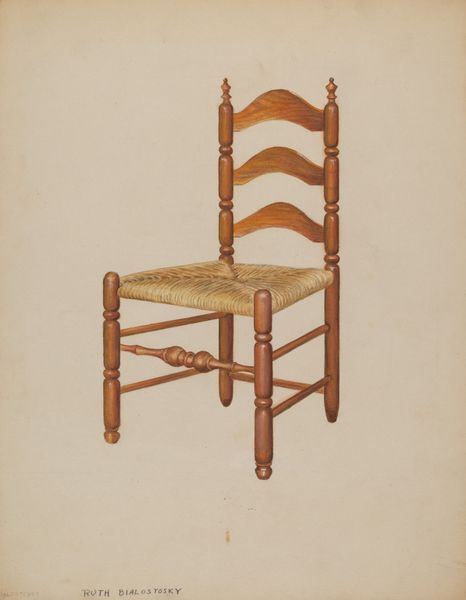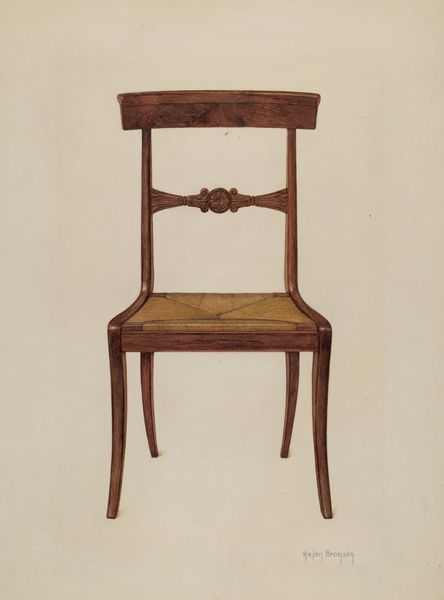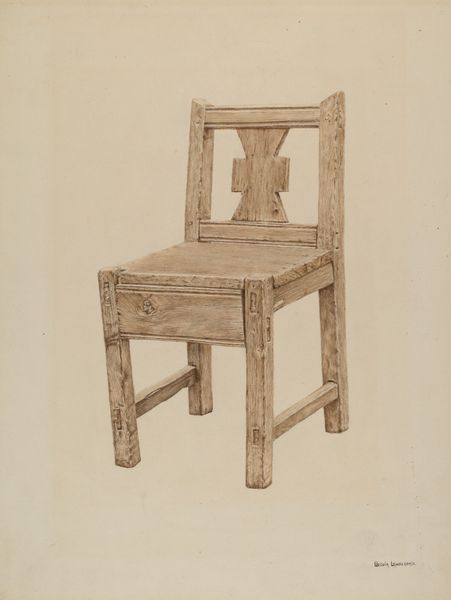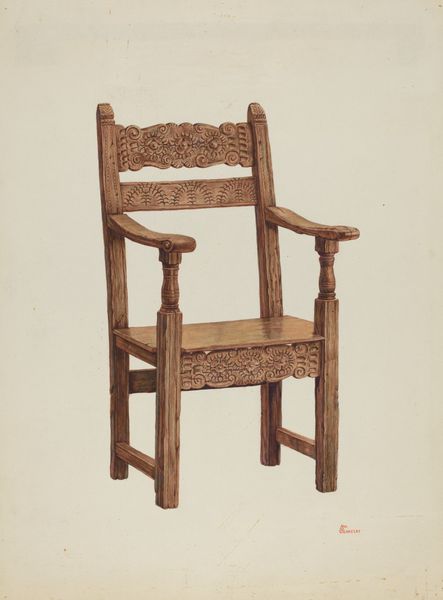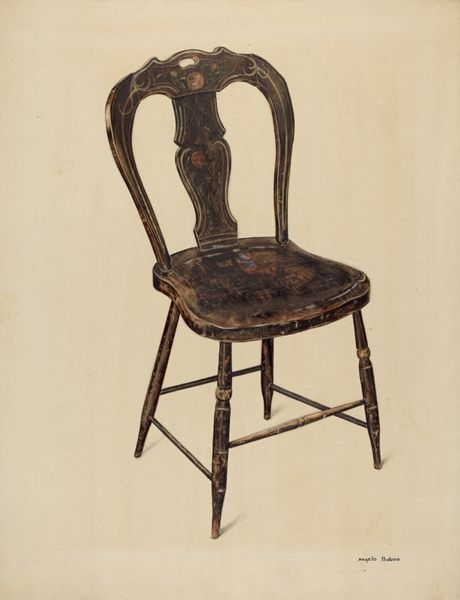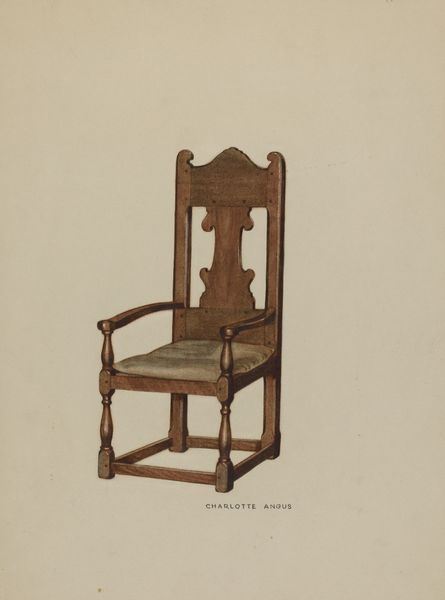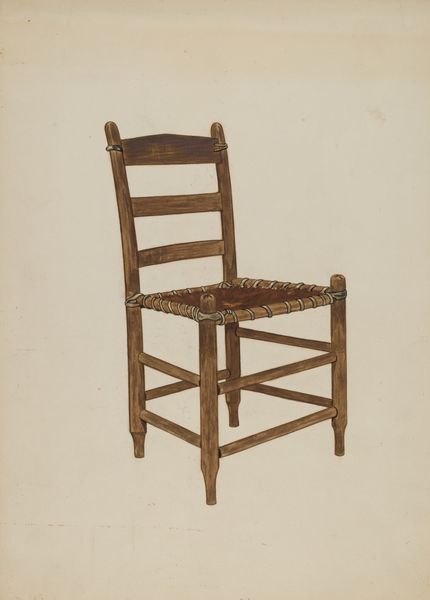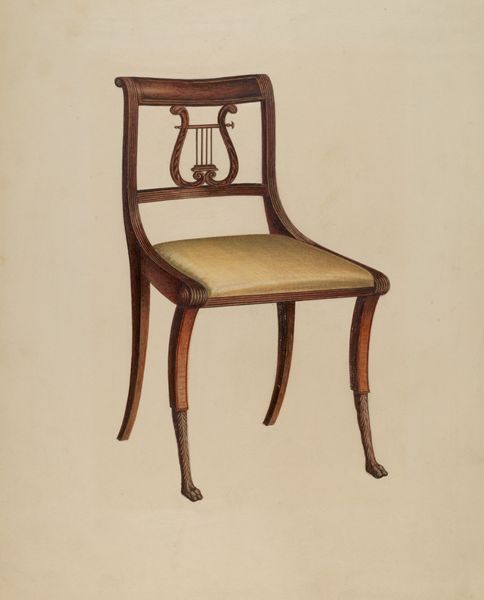
drawing, watercolor
#
drawing
#
watercolor
#
watercolour illustration
#
academic-art
Dimensions: overall: 35.7 x 24.1 cm (14 1/16 x 9 1/2 in.) Original IAD Object: 37 3/4"high overall. Width seat front 19". See d.s. for details.
Copyright: National Gallery of Art: CC0 1.0
Editor: So, this is Ralph Morton’s "Queen Anne Chair," made around 1942, using watercolor and drawing techniques. It’s so simple, almost austere, but there's also something very dignified about the object and its presentation. How do you interpret this work? Curator: It’s interesting you say dignified. Considering the date, I wonder what it meant to depict this particular object—a chair—during the Second World War. It's a common, everyday item, but elevated through artistic representation. Perhaps it's about the value of domesticity, of finding stability amidst global chaos. Does that resonate with you? Editor: I hadn’t thought about that at all, but it really does. Focusing on something so familiar while the world was changing so drastically… There’s something powerful in that deliberate simplicity. I initially perceived it as a mere exercise in form and technique, but it clearly operates on a deeper level. Curator: Exactly! The academic style, rendered with such precision, almost insists on careful observation. What assumptions about gender roles or class might be embedded in that emphasis on domestic space? Think about who would have likely used such a chair, and in what context. Editor: Good point. And the name, "Queen Anne Chair," suggests a connection to a certain kind of elite history. By painting it, is Morton democratizing that image or reinforcing certain power dynamics? Curator: That’s a brilliant question. Is he making it accessible, or further idealizing a particular lifestyle? Maybe it's a bit of both. Considering his historical context, it encourages a re-evaluation of everyday objects and their deeper meanings. Editor: This really highlights the importance of understanding the context of artmaking! I never would have reached this understanding on my own. Curator: Indeed. And it prompts us to consider our own assumptions, our own places as users of images today. Art serves as an interesting lens through which to observe our society and norms, after all.
Comments
No comments
Be the first to comment and join the conversation on the ultimate creative platform.
